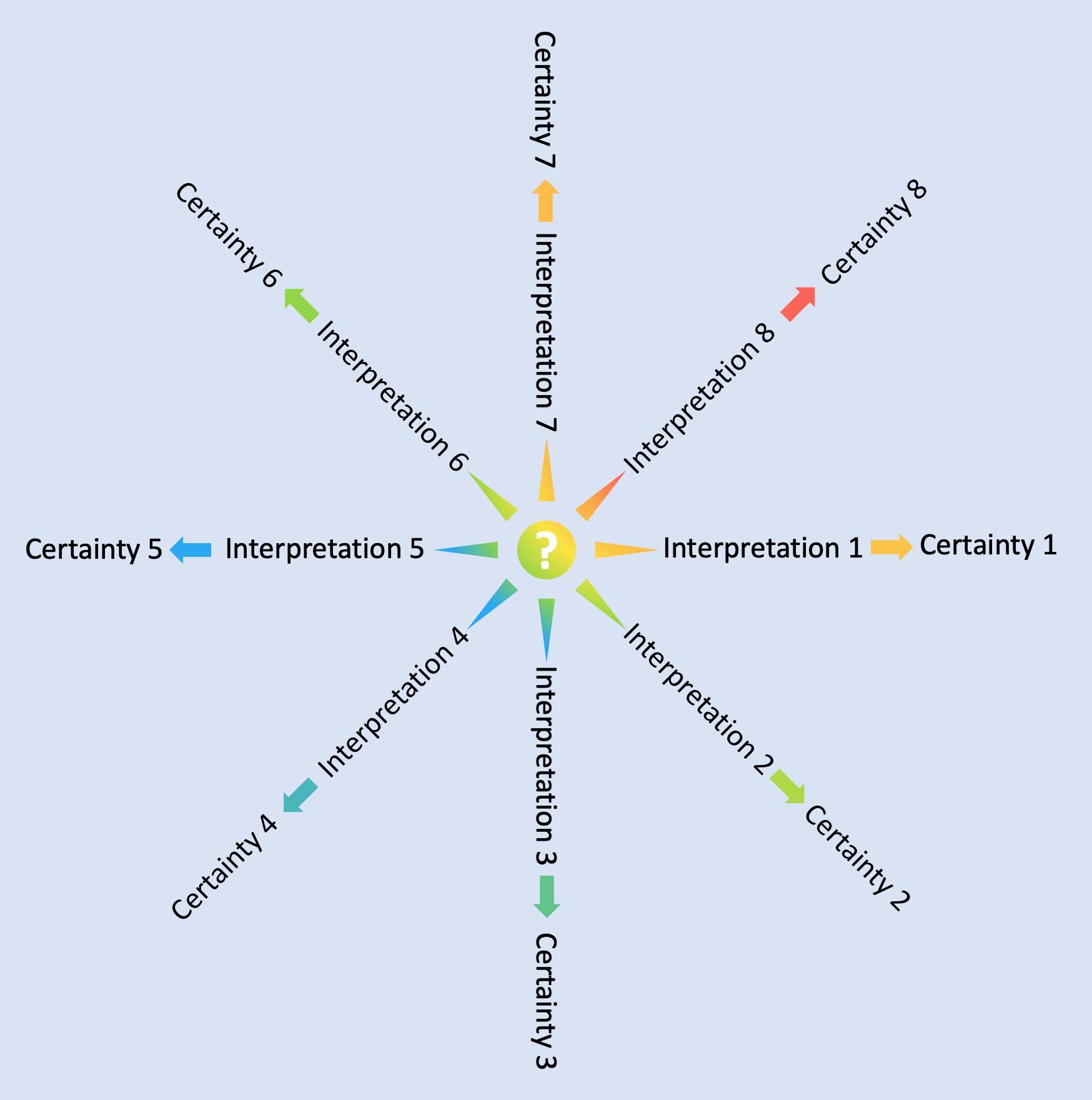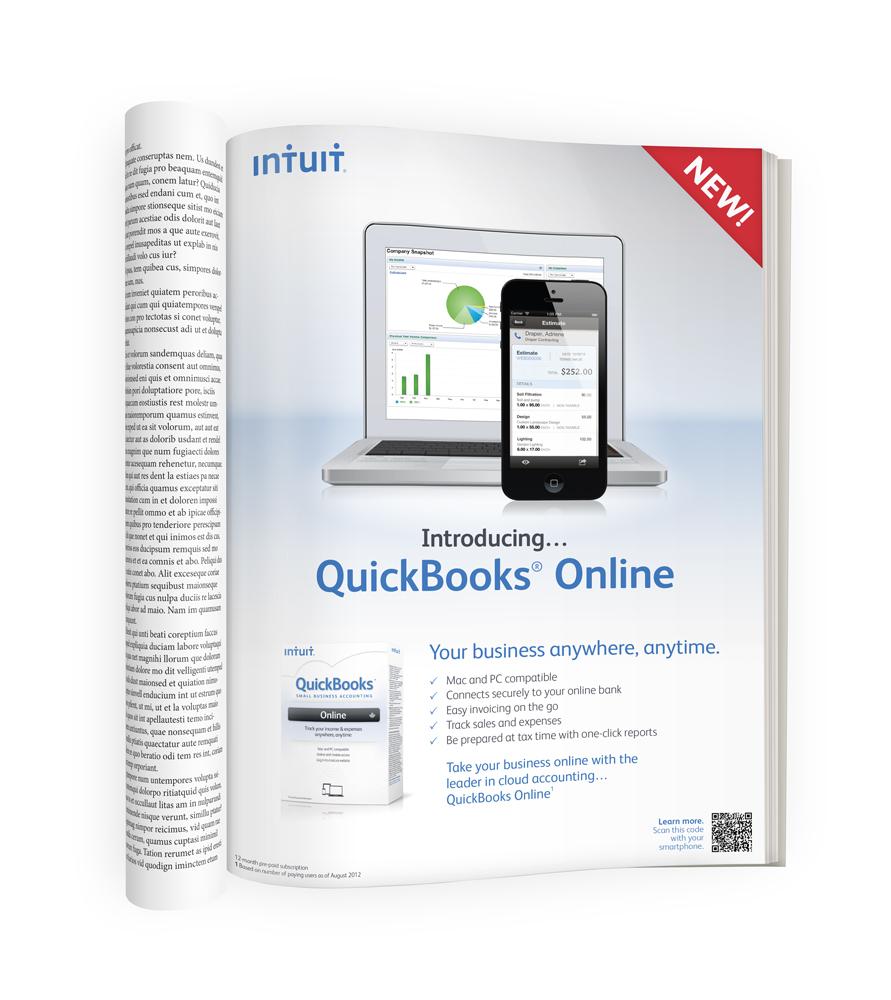
QuickBooks is a versatile and user-friendly accounting software that has revolutionized bookkeeping and financial management for small businesses, freelancers, and individuals. With its comprehensive features and intuitive interface, navigating through QuickBooks efficiently can make a significant difference in streamlining your financial operations. Whether you are a beginner or an experienced user, this article will guide you through the fundamental steps and essential tips to effectively utilize QuickBooks, enabling you to effortlessly keep your finances in order. By implementing the techniques outlined here, you will be equipped with the knowledge and tools to maximize the benefits of QuickBooks, saving time, reducing errors, and ultimately gaining better control over your financial records.
Setting up QuickBooks for Your Business
is an important step to ensure accurate and efficient bookkeeping. With its user-friendly interface and powerful features, QuickBooks is a popular choice for small and medium-sized businesses. Here are some essential steps to get started with QuickBooks:
1. Choose the Right Version of QuickBooks
Before diving into the setup process, it’s crucial to choose the right version of QuickBooks. QuickBooks offers various versions tailored to different business needs, such as QuickBooks Online, QuickBooks Desktop, and QuickBooks Self-Employed. Evaluate your business requirements and select the version that suits you best.
Tip: If you need mobility and flexibility, QuickBooks Online is a great choice. For advanced reporting and inventory management, QuickBooks Desktop is preferable.
2. Set Up Your Company Profile
Start by setting up your company profile in QuickBooks. Enter your business name, address, and contact details accurately. You can also add your company logo for a professional touch. This information will appear on your invoices, estimates, and other financial documents.
Tip: Before proceeding, gather all the necessary information, such as your Employer Identification Number (EIN), bank account details, and tax ID numbers.
3. Configure Chart of Accounts
Configuring your Chart of Accounts is another crucial step in setting up QuickBooks. A Chart of Accounts consists of different categories and subcategories that track your business transactions. Customize the Chart of Accounts according to your business needs, including income, expenses, assets, liabilities, and equity accounts.
Tip: Keep your Chart of Accounts simple and organized to streamline your bookkeeping process. Avoid creating too many accounts, as it can become challenging to manage.
4. Link Your Bank Accounts and Credit Cards
Linking your bank accounts and credit cards to QuickBooks is a time-saving feature that allows for automatic transaction downloads. By connecting your financial accounts, your transactions will be imported directly into QuickBooks, reducing manual data entry.
Tip: Regularly reconcile your bank accounts and credit cards to ensure that all transactions are accurately recorded and to catch any discrepancies or errors.
5. Customize Your Invoices and Financial Reports
Make your business stand out by customizing your invoices with your company logo, colors, and personalized messages. QuickBooks allows you to create professional-looking invoices that reflect your brand identity. Additionally, take advantage of QuickBooks’ wide range of financial reports to gain valuable insights into your business performance.
Tip: Regularly review your financial reports, such as Profit and Loss Statements and Balance Sheets, to monitor your business’s financial health and make informed decisions.

Navigating the QuickBooks Dashboard and Menu
The QuickBooks Dashboard is the first thing you see when you log into your QuickBooks account. It provides a quick overview of your company’s financial health and performance. The Dashboard is customizable, allowing you to choose the widgets and reports that are most relevant to your business. To access the Dashboard, simply log into your QuickBooks account and click on the Dashboard tab in the top navigation menu.
Once you’re on the Dashboard, you’ll see a variety of widgets that provide a snapshot of your business’s key financial information. These widgets can be customized to show different metrics such as income and expenses, accounts payable and receivable, and cash flow. You can drag and drop widgets to rearrange them on the Dashboard, or click the gear icon to customize the information displayed in each widget.
In addition to the Dashboard, the QuickBooks menu provides easy access to all the features and functions of the software. The menu is organized into several sections, including Customers, Vendors, Employees, Banking, and Reports. Each section contains a dropdown menu with more specific options. For example, under the Customers section, you’ll find options to create and manage invoices, track sales, and view customer information.
To navigate the menu, simply click on the section that corresponds to the task or feature you want to access. This will display a dropdown menu with a list of available options. You can then click on the specific option you want to use. For example, if you want to create a new invoice, you would click on the Customers section, then select the “Create Invoice” option from the dropdown menu.
Using QuickBooks efficiently requires familiarity with the Dashboard and menu. By customizing your Dashboard and using the menu to access different features and functions, you can quickly and easily manage your business’s finances. Take some time to explore the various widgets and menu options to find the ones that are most useful for your specific needs. Don’t be afraid to experiment and try new features – QuickBooks offers a wealth of tools and resources to help you streamline your financial management processes.
To summarize, the QuickBooks Dashboard and menu are essential tools for managing your business’s finances. The Dashboard provides a customizable overview of your company’s financial health, while the menu allows you to access the various features and functions of the software. By familiarizing yourself with these tools and customizing them to suit your needs, you can effectively navigate QuickBooks and streamline your financial management processes.

Recording Transactions and Managing Accounts in QuickBooks
Paragraph 1:
QuickBooks is a powerful accounting software that helps businesses efficiently record and manage their financial transactions. With its user-friendly interface and advanced features, QuickBooks simplifies the process of recording transactions and maintaining accurate accounts. Whether you are a small business owner or a freelancer, learning how to use QuickBooks is essential for effectively managing your finances.
Paragraph 2:
To start recording transactions in QuickBooks, you need to set up your accounts. This involves creating categories for income, expenses, assets, and liabilities. With QuickBooks, you can easily add new accounts and customize them according to your business needs. Once your accounts are set up, you can then begin entering transactions, such as sales, expenses, and payments, into the software.
Paragraph 3:
One of the key features of QuickBooks is its ability to generate invoices and track payments. When you create an invoice in QuickBooks, you can easily customize it with your business logo and add details such as due dates and payment terms. With just a few clicks, you can send the invoice to your clients and track when they make their payments. QuickBooks also allows you to set up reminders for overdue invoices, ensuring that you never miss out on receiving payments.
Paragraph 4:
Managing accounts in QuickBooks involves reconciling your bank statements with the transactions recorded in the software. This ensures that your accounts accurately reflect the actual balances and transactions. QuickBooks provides a reconciliation feature that allows you to easily match your bank transactions with those in the software. By regularly reconciling your accounts, you can identify any discrepancies or errors, enabling you to take timely corrective actions.
Paragraph 5:
QuickBooks offers a range of reporting options that provide valuable insights into your business’s financial health. You can generate basic reports such as profit and loss statements, balance sheets, and cash flow statements. Additionally, QuickBooks allows you to create customized reports that focus on specific aspects of your business, such as sales by product or customer. These reports not only provide you with a snapshot of your financial performance but also help you make informed decisions to grow your business.
Generating Reports and Analyzing Financial Data in QuickBooks
Generating reports and analyzing financial data are essential tasks when it comes to managing your business effectively in QuickBooks. This powerful accounting software offers a wide range of features that allow you to access and analyze key financial information, helping you make better business decisions. In this section, we will explore how to generate reports and analyze financial data in QuickBooks.
1. Generating Reports
QuickBooks makes it incredibly easy to generate reports based on your financial data. To generate a report, simply navigate to the Reports menu and select the type of report you need. QuickBooks offers various report categories, including sales, expenses, banking, and more. Once you select a category, you can further customize the report by selecting specific criteria such as date range, customer, or vendor.
- To generate a profit and loss report, go to Reports > Company & Financial > Profit and Loss. This report provides a comprehensive overview of your company’s revenues, expenses, and net income.
- To generate a balance sheet report, go to Reports > Company & Financial > Balance Sheet. This report provides a snapshot of your company’s financial position by showing its assets, liabilities, and equity.
- Other commonly used reports include invoice reports, sales reports, and expense reports, which can help you monitor and analyze your company’s financial performance.
2. Customizing Reports
Customizing reports in QuickBooks allows you to view the specific data and information that is most relevant to your business. To customize a report, simply click on the customize button located at the top right corner of the report window. From there, you can modify the report’s layout, columns, filters, and headers.
- To change the date range of a report, select the desired range from the date drop-down menu.
- To add or remove columns, click on the Add More Columns or Remove Columns options.
- Filters can be used to narrow down the data displayed in a report based on specific criteria such as customer, vendor, or item.
- Headers can be customized to display your company’s logo or other relevant information.
3. Memorizing Reports
Memorizing reports in QuickBooks allows you to save customized reports for future use. This feature is particularly useful if you frequently generate the same reports with specific settings. To memorize a report, simply customize it as desired and then click on the Memorize button located at the top of the report window.
- When saving a memorized report, you can choose to have QuickBooks automatically update the report with current data each time you run it.
- You can also choose to have memorized reports automatically emailed to certain recipients on a regular basis, providing them with the most up-to-date financial information.
4. Analyzing Financial Data
QuickBooks provides powerful tools to help you analyze your financial data for valuable insights. One such tool is the ability to create custom graphs and charts based on your financial information. To create a graph, simply select a report that contains the data you want to visualize and click on the Graph button located at the top right corner of the report window.
Additionally, QuickBooks offers advanced features such as budgeting and forecasting tools that allow you to set financial goals and track your progress towards achieving them. These tools can help you identify areas for improvement, make informed business decisions, and plan for future growth.
By mastering the art of , you can gain valuable insights into your business’s financial health and make informed decisions that drive growth and success.

Utilizing Advanced Features to Streamline Your Workflow in QuickBooks
If you are looking to maximize your productivity and streamline your business processes, QuickBooks offers a range of advanced features to help you achieve just that. In this post, we will explore some of the most powerful tools available in QuickBooks that can significantly enhance your workflow.
1. Customizable Dashboards
QuickBooks allows you to create personalized dashboards that provide an overview of your business’s financial health. You can customize these dashboards to display the key performance indicators (KPIs) that are most important to you, such as revenue, expenses, and profit margins. By having all the vital information at your fingertips, you can make informed and data-driven decisions quickly.
2. Automated Invoicing
With QuickBooks, you can automate your invoicing process, saving you time and reducing the chances of human error. You can set up recurring invoices for regular clients, customize the templates to match your branding, and even schedule invoices to be sent automatically. This feature ensures that your customers receive accurate and timely invoices, improving cash flow and customer satisfaction.
3. Advanced Reporting
QuickBooks offers robust reporting capabilities that allow you to gain deeper insights into your business’s financial performance. You can generate various reports, including profit and loss statements, cash flow statements, and balance sheets. Furthermore, you can customize these reports by selecting specific date ranges, adding or removing columns, and applying filters. By analyzing these reports, you can identify trends, spot areas for improvement, and make informed business decisions.
4. Streamlined Payroll Management
QuickBooks simplifies the payroll process by automating calculations, generating paystubs, and managing employee tax information. You can easily set up direct deposit for your employees, saving time and reducing administrative tasks. Additionally, QuickBooks automatically calculates payroll taxes and helps you stay compliant with tax regulations. This feature ensures accuracy and efficiency in your payroll management, giving you peace of mind.
5. Integrations and Mobile Accessibility
QuickBooks seamlessly integrates with a wide range of apps and tools, allowing you to extend its functionality and streamline your workflow further. Whether you need to integrate with your CRM, time tracking software, or e-commerce platform, QuickBooks has you covered. Moreover, QuickBooks offers a mobile app that enables you to access your financial data, create invoices, and manage expenses on the go, providing flexibility and convenience.
Q&A
Q: What is QuickBooks?
A: QuickBooks is a popular accounting software developed by Intuit that helps small businesses manage their finances and track income and expenses.
Q: What are the benefits of using QuickBooks?
A: QuickBooks offers numerous benefits such as streamlined bookkeeping, simplified invoicing, accurate financial reporting, efficient sales tracking, and ease of tax preparation. It also offers the ability to integrate with various business tools and applications to enhance productivity.
Q: How do I get started with QuickBooks?
A: To get started with QuickBooks, you need to first choose the right version for your business needs, install the software on your computer, and then set up your company profile by entering your business information and preferences.
Q: Is QuickBooks suitable for non-accountants?
A: Yes, QuickBooks is designed to be user-friendly even for those without an extensive accounting background. It provides a simple interface and guides users through the process of recording financial transactions, generating reports, and reconciling bank accounts.
Q: Can I access QuickBooks online?
A: Yes, Intuit offers a cloud-based version called QuickBooks Online, which allows you to access your financial data from anywhere with an internet connection. This makes it convenient for businesses with remote or multiple locations.
Q: How does QuickBooks help with invoicing?
A: QuickBooks provides tools for creating customized, professional invoices, capturing important details such as customer information, products/services, quantities, and prices. It also enables you to track invoice status, send payment reminders, and record customer payments.
Q: Can QuickBooks handle payroll?
A: Yes, QuickBooks offers payroll features to help simplify the process of managing employee salaries, benefits, and taxes. It allows you to calculate wages, generate pay stubs, and even handle electronic tax payments and filings.
Q: Can QuickBooks integrate with other business applications?
A: Yes, QuickBooks has a wide range of integrations with popular business applications such as CRM software, e-commerce platforms, point-of-sale systems, and payment gateways. This allows you to automate data transfer across different tools and streamline your business operations.
Q: Is QuickBooks suitable for large businesses?
A: QuickBooks is primarily designed for small to medium-sized businesses. While it can handle the financial needs of many larger businesses, there may be limitations in terms of scalability and functionality. In such cases, enterprise-level solutions might be more suitable.
Q: What kind of support is available for QuickBooks users?
A: QuickBooks provides various support options including live chat, email support, community forums, and a robust knowledge base. Additionally, Intuit offers training resources, webinars, and certifications to help users make the most out of the software.
Note: This Q&A is intended to provide general information and should not be considered as professional advice. For specific questions or concerns, it is recommended to consult with an accountant or QuickBooks expert. In conclusion, QuickBooks is a powerful tool that can greatly simplify your financial management tasks. We have explored the various features and functions that can aid you in organizing your business finances efficiently. From setting up your company profile to managing invoices, expenses, and payroll, QuickBooks offers a comprehensive range of services for small businesses. By utilizing the step-by-step instructions provided in this article, you can gain a better understanding of how to navigate through the QuickBooks platform and make informed decisions for your business. Remember, practice makes perfect, so don’t hesitate to explore the different options available and experiment with the software. With time and patience, you will become confident in utilizing QuickBooks to its full potential, allowing you to focus more on growing your business and less on administrative tasks. Here’s to streamlining your financial processes and maximizing your business’s success with QuickBooks!






